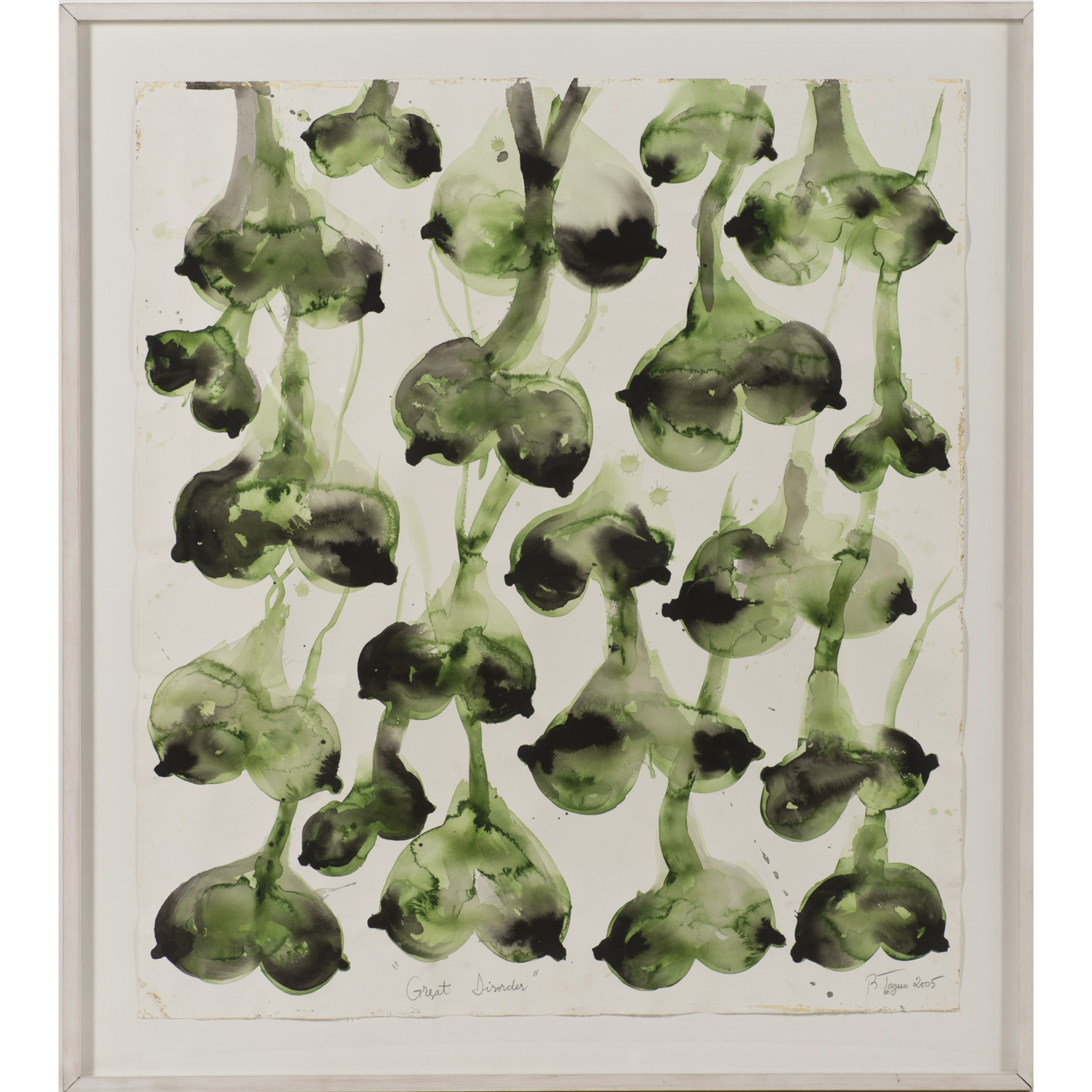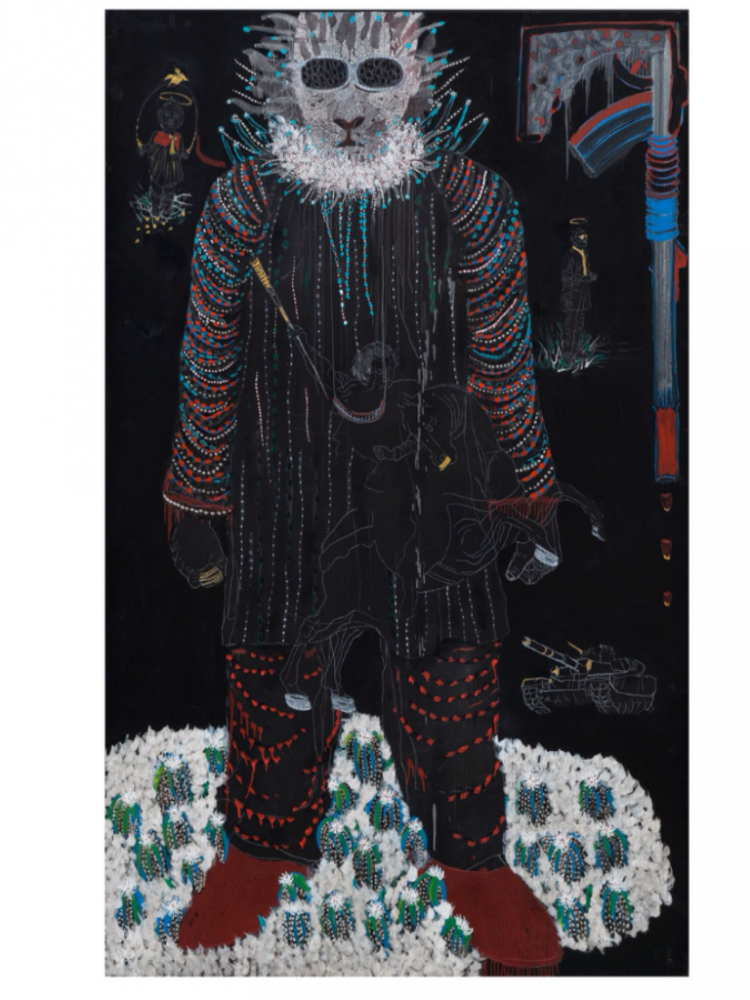The TRUE AFRICA 100 is our list of innovators, opinion-formers, game-changers, pioneers, dreamers and mavericks who we feel are shaping the Africa of today.
Anne de Villepoix is a gallerist based in Paris who represents artists as diverse as Barthélémy Toguo, Senga Nengudi and Ingrid Mwangi. She tells us about why she is attracted to the work of African artists and which artists she is particularly excited by.
Why did you decide to show so many African artists in your gallery?
I started out as an artist. I had studied art, art history and archeology for five years, and at the same time I had chosen to study contemporary music, contemporary dance and contemporary film. So as an artist I knew all the avant-garde movements — and all the techniques — that informed contemporary art. After those studies, I focused on photography, but I stopped after a while, because I felt that too many photographers were copying Nan Goldin, or other photographers who had made an impact. I needed to find something new, something fresh. And I found that newness, that freshness in the work of some African artists. The ones I liked refused to set limits to their imagination, to their humour.
The artists I love – Africans, African Americans, or originals from other cultures around the world – they are constantly taking risks.
I guess many people associate my gallery with artists like Barthélémy Toguo, who is from Cameroon and works with photography, prints, videos. There is a lot of humour in his sculptures. He sculpts women’s bums, and paints dots on them, and makes these bums look like footballs. In the beginning, around 1998, I would go to the Kunstakademie in Düsseldorf to meet with him. That is where many of the world’s greatest artists come from. He would show me some very graphic drawings that were inspired by his culture, that he had somehow reinterpreted with European traffic signs. I liked that he was always relying on an unusual set of techniques.
But at the same time I felt that the work needed to evolve a bit, that it needed a new language, and we kept at it and then we ended up working together a lot, on all kinds of sculptures, installations, on so many different projects. Barthélémy and I collaborated on a memorable exhibition at the Palais de Tokyo in Paris, where one piece was a net that had all these bums-turned-footballs in them. His work keeps evolving, and I spend so much time rediscovering each one of his pieces. I love that. But I don’t limit myself to African artists.
I also work with African-American artists, like Yashua Klos, who in Brooklyn-based but was born and raised on the south side of Chicago. His work is so new, so incredible. The artists I love – Africans, African Americans, or originals from other cultures around the world – they are constantly taking risks.
THANKS to all who came out to the opening! AS BELOW, SO ABOVE @ Tilton until Oct 17th. CATALOGUE comin soon! pic.twitter.com/n8VHXlCzjk
— yashua Klos (@yashuared) September 16, 2015
Give us an example of one African artist who is changing the game
Chris Ofili was creating great pieces twenty years ago, but in 2015 I would have to name someone like Omar Ba. Changing the game means that you are producing work that has never been seen before. Omar’s work is so inventive, not decorative like so many others, and I am not just saying that because I represent him. A piece like State of Emergency, which was created in 2014, is exceptional on so many levels. Omar was born in Dakar in 1977, was trained at the École Nationale des Beaux-Arts in his native city, and you can tell that he became very skilled at drawing, painting, and just imagining interesting situations.
Omar Ba’s work has always had political undertones, particularly in the way he comments on the state of nature, on flags, on terrorism, on polygamy, on how his mother felt about his father’s polygamy.
As soon as I saw his work in a big group show in Switzerland I was hooked. Not just on his paintings, his wooden sculptures are amazing as well. I went looking for him in his studio in Geneva, where he lives. He actually won the Swiss Art Award in 2011, but his work was a lot more simple at the time he won that award. His work has always had political undertones, particularly in the way he comments on the state of nature, on flags, on terrorism, on polygamy, on how his mother felt about his father’s polygamy, but in 2011 he was still looking for his own vocabulary.
I love Omar’s imagination, and how far it has taken him since 2011. I love the way he draws on various elements in his Senegalese culture. He is changing the game constantly because you never know where his ideas are coming from. None of it really exists in nature, and in State of Emergency you see how smart he is at mixing his blues with his greens. You see how clever he is at using white feathers, but then you might be mistaken, and led to believe that it’s actually cotton he is playing with. The shapes of the heads he paints are out there, because he is alluding to African heads of state in a subtle way. The symbolic head is there, but you see that it has been replaced by a mask and an animal head.
Who is you African of the year?
Marie-Cécile Zinsou. A decade ago, right after getting her degree in art history in France, she moved to Bénin and dared to open the Fondation Zinsou in Cotonou. And as if that weren’t enough, in 2013 the foundation opened a contemporary art museum in Ouidah. It’s so great to see how the local population has embraced these institutions; how Marie-Cécile and her team are collaborating with local schools; how people from different generations in Bénin continue to participate in the process that she initiated.
We interview @McZinsou, founder of Africa's first contemporary art museum @ZinsouFondation http://t.co/azxMwyH9ku pic.twitter.com/znJ5VClnkb
— TRUE Africa (@_TRUEAfrica) October 16, 2015
Visit annedevillepoix.com
Come back tomorrow for the next TRUE Africa 100 and keep up to date using the hashtag #TRUEAfrica



